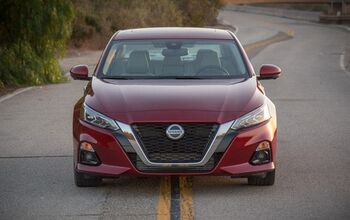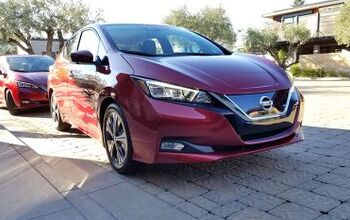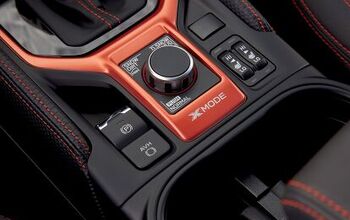2011 Nissan Altima Hybrid Review
Although highly controversial, perceived ‘environmental’ concerns have required many businesses to adjust to a new political climate. In the case of automakers, a big part of that has been pushing alternative or more fuel-efficient vehicles. In North America, the most popular (and high profile) approach has been hybrids.
FAST FACTS
| 1. Fuel economy for the Altima Hybrid is rated at 33/35-mpg (city/hwy). |
| 2. The car’s combined gas/electric power rating is 198 horsepower. |
| 3. The Altima Hybrid is offered in just eight states and in Canada. |
| 4. For 2011 pricing remains unchanged at $26,780. |
Sure, the Toyota Prius has captured the lion’s share of attention, but among the major Japanese brands, Honda and Nissan have also been peddling their own versions. Nissan has been somewhat hobbled by the fact that its mid-size Altima hybrid sedan utilizes many hybrid parts courtesy of Toyota, which have so far restricted the car’s availability and also profitability. For the 2011 model year (its fourth on the market) it still won’t be a nationwide vehicle – only offered for sale in nine U.S. States – California, Connecticut, Maine, Massachusetts, New Jersey, New York, Rhode Island and Vermont.
ANONYMOUS GREEN DRIVING
At first sight, our test victim didn’t exactly set itself apart. Prius followers may go gaga over their favorite car’s trapezoidal styling, but the Altima Hybrid looks like it should be parked outside the local bingo hall, a fact that was not helped by our tester being finished in a hue called ‘Mystic Jade.’ Other somber exterior colors, such as Navy Blue, Ocean Grey, Dark Slate, Winter Frost, Super Black and (this is a good one) Radiant Silver, help cement this car’s persona as sensible and safe. Inside, earth tones also dominate – ours was finished in a youthful beige, but black, gray and green are available, though not with all exterior colors.
The Altima has gained a reputation as a somewhat sporting sedan over the last decade, with big wheels and tires, a sport tuned suspension and lusty engines (particularly the 3.5-liter V6) making it a livelier alternative to mainstream porridge like the Toyota Camry. That said, the Hybrid version appears somewhat out of place compared to its sportier siblings, the Altima sedan and coupe. Perhaps it’s the Toyota influence, or perhaps it’s just the fact that as a hybrid, it’s got a different mission in life.
When you saddle up and take in those acres of beige, you’re faced with a decent driving position and seats that are quite supportive and comfortable, especially compared to a current Accord. Driver ergonomics are pretty good too – a steering wheel with both tilt and telescoping functions makes getting the right posture easy and height adjustable seat belts seem to work better than most. Power controls are reasonably well placed, but this author found that the window switches were located a bit too far forward – which proved frustrating. The lack of a trunk release handle on the driver’s side floor, next to the fuel door lever, was also infuriating.
The Altima Hybrid comes with a standard 6.5-inch centrally mounted touch screen and hard drive navigation system as part of the Technology Package. It features voice recognition and we found the navigation system quite user friendly and intuitive, plus if you order the Premium package, you also get Sirius/XM traffic and weather updates. Back seat space is decent, with ample legroom (35.8 inches, versus 44.1-in up front). Although it sits lower than some current mid and full-size sedans, there’s still 36.8-inches of head clearance for back seat riders, meaning the Altima can accommodate four average size adults with few issues.
TRUE HYBRID
Like many current Nissan offerings, the ‘green’ Altima features a push button starter, but for those not used to Hybrids, it can be a little unnerving when the gauges come on and there’s no noise from under the hood. The powertrain consists of Nissan’s 2.5-liter QR25 four-cylinder, twin cam engine that boasts continuous variable valve timing and electronic throttle control, teamed with an electric motor and a Hybrid Vehicle Electric Control Unit (HV-ECU) that works in conjunction with a Continuously Variable Transmission to provide drive to the wheels.
Unlike Honda’s hybrids, but like the Toyota Prius, the Altima is a true hybrid – the torque produced from the electric motor at zero rpm gives sufficient thrust to move the car at low speeds without assistance of the gasoline engine. As a result, when you’re driving around town or stuck in stop and go city traffic, it enables substantial emissions and fuel cost savings to be realized as it is under these conditions when an internal combustion engine is least efficient.
Punch the throttle and the 2.5-liter twin cam kicks in. For the Hybrid, it’s rated at 158 horsepower at 5200-6000 rpm and 162 ft-lbs of torque. The latter figure is reached at a relatively low 2800 rpm, providing lively mid-range acceleration. When combined with the electric thrust, the total output is a more significant 198-hp.
The transition from electric to gasoline power and back again is relatively seamless aided by the ‘intelligent’ CVT – one of the smoothest we’ve encountered and one that’s largely devoid of the ‘slipping’ sensation found in some others on the market.
Nissan claims that the Altima Hybrid can go around 600 miles between fill ups and EPA fuel economy ratings are 33-mpg city and 35-mpg highway. It doesn’t sound that impressive on paper, but it’s really the city figure that counts. During our time with the Altima Hybrid, we put it through multiple 120 mile round trips, much of it through city driving, and the difference in fuel consumption was quite noticeable with visits to the pump almost halved. Still, when compared to newer and more advanced hybrids like the Ford Fusion and Hyundai Sonata, the fuel economy is less than impressive.
SURPRISINGLY ZESTY
Nissan has prided itself on infusing its product lineup with sporty DNA, even on its most milquetoast offerings. Although the Altima Hybrid doesn’t exactly scream ‘enthusiast,’ the chassis and suspension tuning are definitely biased toward the tauter side of comfort. The ride is fairly firm, even with the 16-inch wheels and high profile 60 series tires, while pushing the car through the turns reveals surprisingly neutral handling for a front driver. Credit that to equal angled half shafts, a fairly stiff structure and a Macpherson Strut front suspension mounted onto a rigid subframe, instead of directly to the body. Standard Vehicle Stability Control also helps. In this ensemble, the steering feels like the weak link. It’s boosted and somewhat spongy, and doesn’t provide a great deal of feedback.
The Altima Hybrid sports four-wheel disc brakes with standard ABS and features regenerative braking, a feature common to other hybrid cars. A generator applies resistance to the driveshafts under braking, which converts the friction into energy for storage in the car’s Nickel Metal Hydride batteries, ready for when electric motor power is needed. It’s less aggressive than some other systems currently on the market, though the brakes remain fairly responsive, with good pedal feel and linear action.
For 2011 the Altima Hybrid’s price remains unchanged at $26,780 for a single, decently equipped model. Nissan currently slaps a $750 destination charge on this car too, so by the time you’re out the door, with taxes and license fees, you’re probably looking at somewhere in the low to mid $30,000 range; though rated as an Advanced Technology Partial Zero Emissions Vehicle (AT-PZEV), government incentives abound, including tax credits, which should help offset part of the purchase price.
THE VERDICT
Given the high profile status that hybrids currently enjoy, the Altima Hybrid seems to have been lost in the shadows almost since the day it was introduced. Granted, it’s a pleasant and decently capable car, with good road manners, fine ergonomics and good urban fuel economy, but a relatively high purchase price for something so non-descript, along with limited availability, means that it doesn’t represent one of the best buys on the market. Plus, dated styling as well as newer and more efficient hybrids like the Fusion Hybrid and new Sonata Hybrid make the Nissan nearly obsolete.
RELATED READING
LOVE IT
- Decent acceleration
- Nicely balanced chassis
- Good in-town fuel economy
LEAVE IT
- Spongy steering
- Non-descript looks
- Availability
More by Huw Evans





































Comments
Join the conversation
Range is fantastic at 600 plus miles. I can drive all the way to where I want to be and don't have to get scalped at those interstate stations that mark the gas up 60 cent's a gallon. But I don't get the advertised gas mileage, even around town. I'm getting like 28 mpg and my old Pontiac Grand Prix got 23 (in town.) On the highway, I'm getting mayber 31 in the Nissan and I've gotten $29 in the old Grand Prix. Plus the Nissan Altima Hybrid's trunk space is about 1/3 the size of the Pontiacs. So the Nissan will take 5 people, but it's a stretch to take 5 people plus their luggage. Best miles per gallon I've had was in SE Phoenix on those long flat runs between lights. There on a week in February I got 35.4 mpg! I have heard the Camry Hybrid gets over 40 mpg.